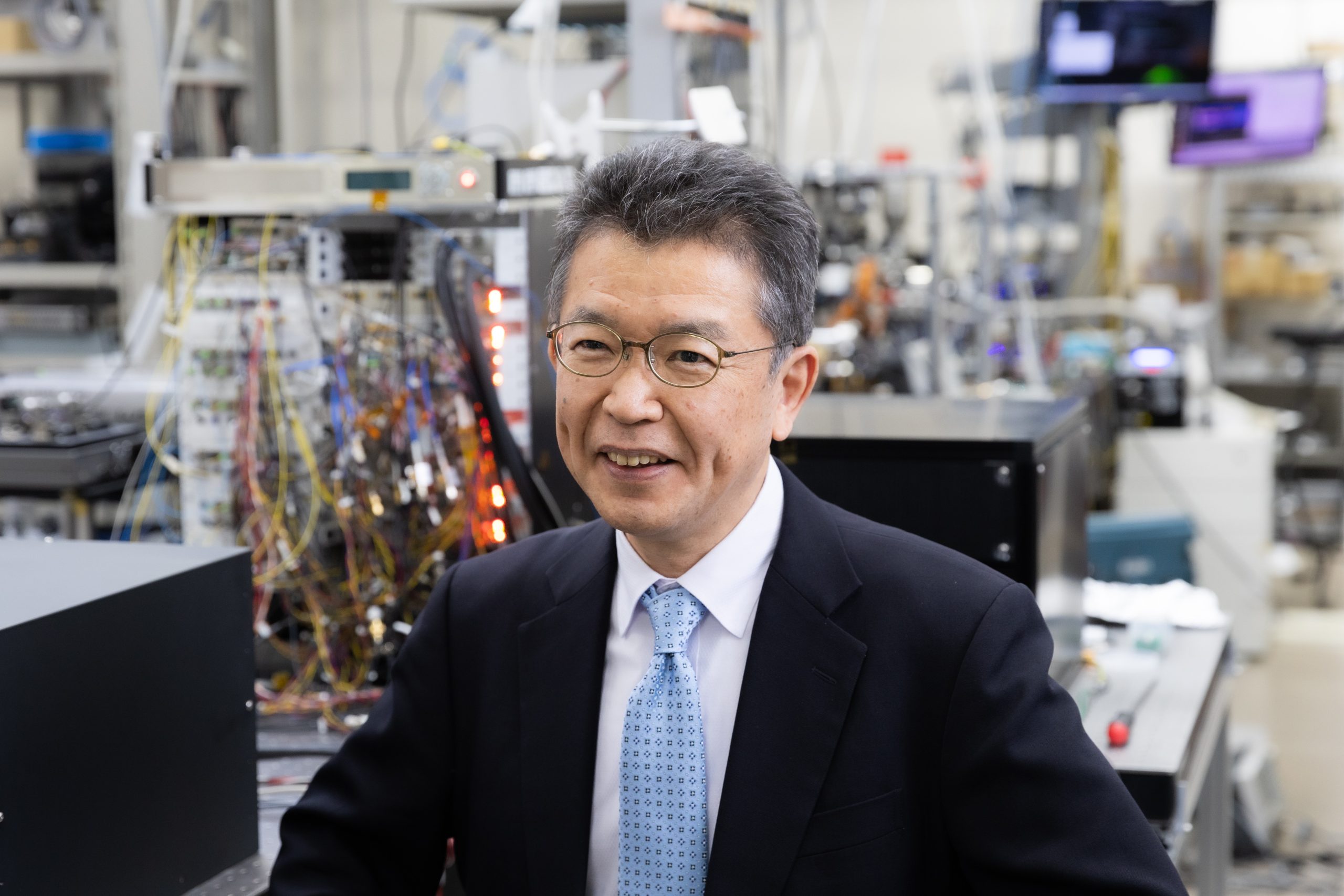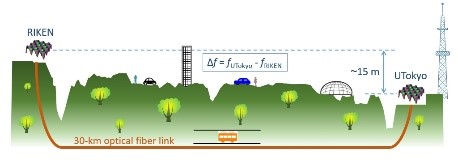Spacetime Engineering Research Team
Team Director
Hidetoshi Katori
D.Eng.

Contact
hkatori [at] riken.jp
Spacetime Engineering Research Team,
RIKEN Center for Advanced Photonics
#W421 4F Cooperation Center,
2-1 Hirosawa, Wako, Saitama 351-0198 Japan
Related links
Laboratory Website
Spacetime Engineering Research Team![]()
Laboratory on RIKEN Website
Spacetime Engineering Research Team | RIKEN![]()
Outline
Clocks have been a tool for sharing time based on universal periodic phenomena; humankind has relied upon the earth's rotation since antiquity. The radiation from an atom provides us with far more accurate periodicity. State-of-the-art atomic clocks sense the relativistic space-time curved by gravity, which reveals the difficulty of sharing time with others. Moreover, such clocks may be used to investigate the constancy of fundamental constants upon which their operation is based.
Optical lattice clocks proposed in 2001 made ultra-stable and accurate clocks possible by applying the "magic wavelength" protocol. Their precision now surpasses the current definition of the SI second, positioning them as strong candidates for its future redefinition.
Our team develops optical lattice clocks that surpass cesium atomic clocks in accuracy, based on advanced quantum control of ultracold atoms and light.
We are advancing miniaturized and continuously operating lattice clocks, as well as atom-chip–integrated quantum clocks and next-generation nuclear clocks based on nuclear transitions.
Through these studies, we aim to extend the limits of quantum control and establish a new measurement science—“spacetime engineering”—that utilizes relativistic spacetime as a resource.
Fields
Interdisciplinary Science and Engineering, Engineering
Keywords
Quantum electronics, Atomic clock, Quantum metrology, Optical lattice clock, Relativistic geodesy
Subjects
- Exploration of practical applications of optical lattice clocks
- Development of the next-generation transportable optical lattice clocks
- Establishment of relativistic geodetic technology

Remote frequency comparison of optical lattice between RIKEN and the University of Tokyo(UTokyo) reveals their different tick rates as predicted by general relativity.
Selected Publications
- Takamoto, M., Ushijima, I., Ohmae, N., Yahagi, T., Kokado, K., Shinkai, H., and Katori, H.: "Test of general relativity by a pair of transportable optical lattice clocks", Nat. Photonics 14, 411-415 (2020).
- Ushijima, I., Takamoto, M., and Katori, H.: "Operational magic intensity for Sr optical lattice clocks", Phys. Rev. Lett. 121, 263202 (2018).
- Takano, T., Takamoto, M., Ushijima, I., Ohmae, N., Akatsuka, T., Yamaguchi, A., Kuroishi, Y., Munekane, H., Miyahara, B., and Katori, H.: "Geopotential measurements with synchronously linked optical lattice clocks", Nat. Photonics 10, 662-666 (2016).
- Yamanaka, K., Ohmae, N., Ushijima, I., Takamoto, M., and Katori, H.: "Frequency ratio of 199Hg and 87Sr optical lattice clocks beyond the SI limit", Phys. Rev. Lett. 114, 230801 (2015).
- Ushijima, I., Takamoto, M., Das, M., Ohkubo, T., and Katori, H.: "Cryogenic optical lattice clocks", Nat. Photonics 9, 185-189 (2015).
Publications
Members
| Hidetoshi Katori | Team Director |
| Masao Takamoto | Senior Research Scientist |
| Atsushi Yamaguchi | Senior Research Scientist |
| Quentin d’ Armagnac de Castanet | Special Postdoctoral Researcher |
| Shinji Ito | Technical Staff |

